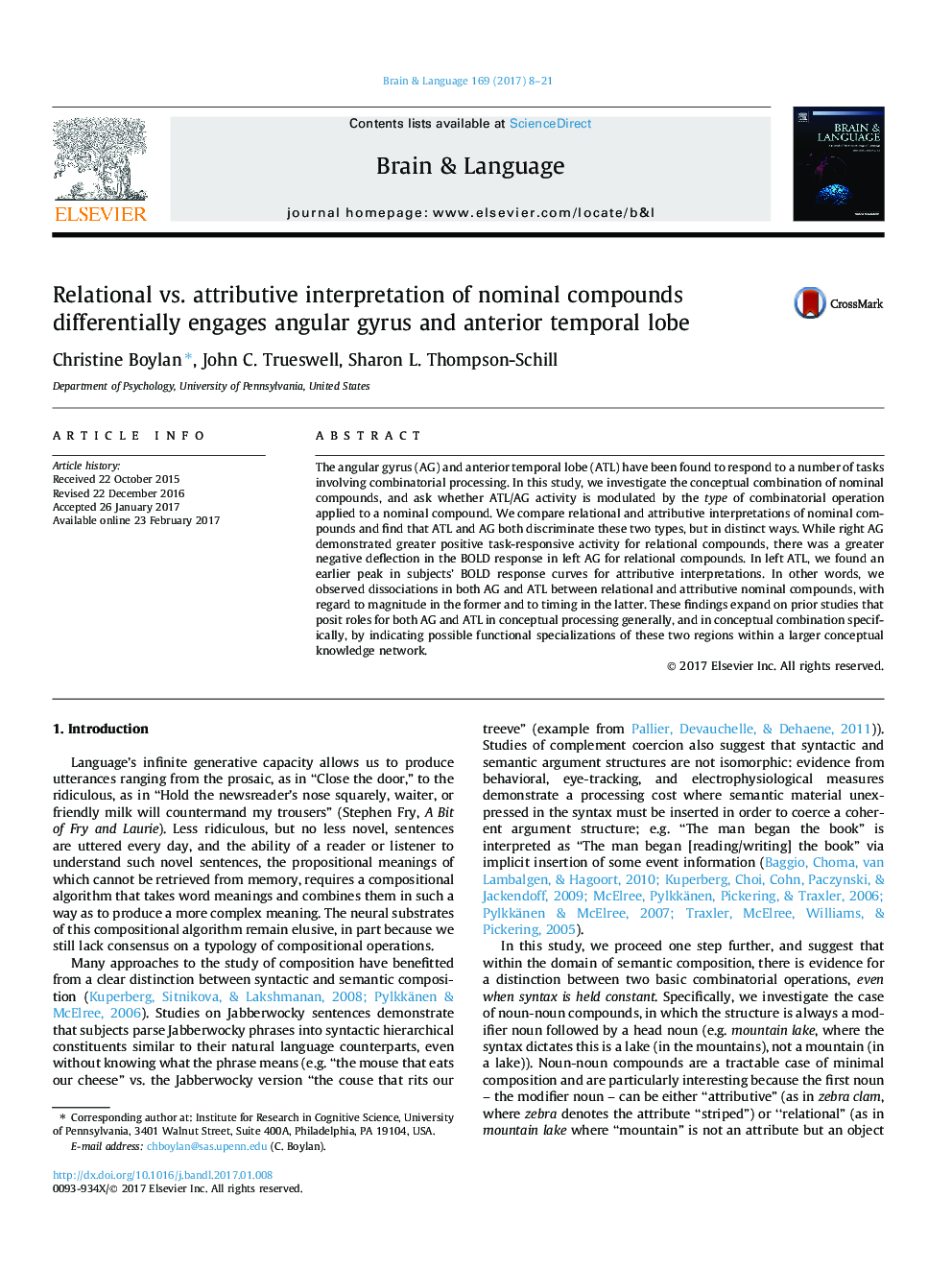| Article ID | Journal | Published Year | Pages | File Type |
|---|---|---|---|---|
| 5041334 | Brain and Language | 2017 | 14 Pages |
â¢We compare conceptual combination of relational and attributive nominal compounds.â¢BOLD response magnitude in angular gyrus (AG) was greater to relational combination.â¢Right AG showed greater positive task-responsive activity for relational compounds.â¢Left AG showed greater negative task-responsive activity for relational compounds.â¢Anterior temporal lobe BOLD time-to-peak was earlier for attributive compounds.
The angular gyrus (AG) and anterior temporal lobe (ATL) have been found to respond to a number of tasks involving combinatorial processing. In this study, we investigate the conceptual combination of nominal compounds, and ask whether ATL/AG activity is modulated by the type of combinatorial operation applied to a nominal compound. We compare relational and attributive interpretations of nominal compounds and find that ATL and AG both discriminate these two types, but in distinct ways. While right AG demonstrated greater positive task-responsive activity for relational compounds, there was a greater negative deflection in the BOLD response in left AG for relational compounds. In left ATL, we found an earlier peak in subjects' BOLD response curves for attributive interpretations. In other words, we observed dissociations in both AG and ATL between relational and attributive nominal compounds, with regard to magnitude in the former and to timing in the latter. These findings expand on prior studies that posit roles for both AG and ATL in conceptual processing generally, and in conceptual combination specifically, by indicating possible functional specializations of these two regions within a larger conceptual knowledge network.
